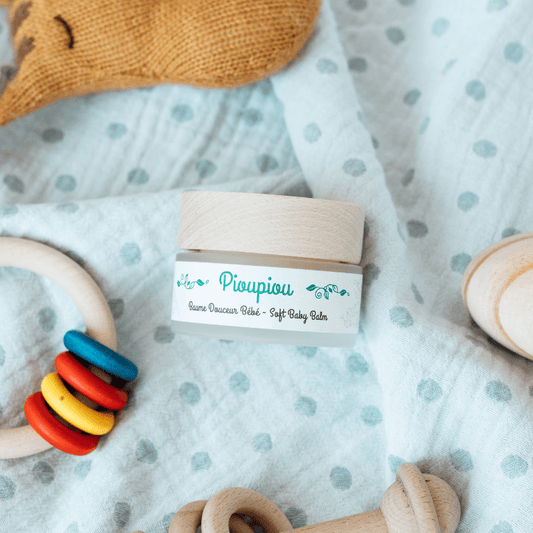
Understanding the delicate skin of babies and children
Share
Delicate, fine, fragile and still immature, the skin of our little ones requires attention and appropriate care. Why and how is the skin of babies and children so different from ours? We describe here the functions and appearance of very young skin, very different from those of an adult.
Immature baby skin
After these 9 months of immersion in amniotic fluid, babies' skin suddenly finds itself in the open air, so it must adapt quickly to this new environment. Fragile, delicate and much finer than that of adults, the skin of toddlers reacts to external aggressions and needs special protection and care. Its barrier function is still immature, more porous and reactive, it needs more protection in order to preserve its ability to regenerate.
Five times thinner than that of an adult , the skin of an infant is very fragile:
- It is less resistant than the mature skin of an adult and is particularly sensitive to microbial, physical and chemical attacks: these substances which come into contact with the skin are more easily absorbed and penetrate into the deeper layers.
- The skin of babies dehydrates more quickly, it is less able to retain water as in adults, hence the sensitive and dry areas.
- It is more sensitive to changes in environment, temperature and UV rays.
The different types of baby skin
Just like adults, babies have different skin types. Four can be noted:
- Normal skin - supple, soft and comfortable.
- Dry skin - often dehydrated, rough and rough.
- The so-called “ atopic ” skin – extremely dry, it presents red patches and itchy sensations.
- Very sensitive skin – very reactive, easily irritated, has redness and tightness.
To take care of your child's skin, it is important to choose specific and gentle hygiene and care products.
What about when the child grows up?
Until the age of 6, children's skin is thinner and more fragile than that of adults.
Then when he grows up, his skin also matures. At around age 6, the structure of the skin matures and becomes almost similar to that of an adult, but it does not become less fragile. The skins of little girls and little boys are similar and share the same characteristics until puberty.
The activity of the sebaceous glands begins to increase when the hormonal changes of puberty occur, that is, around the age of 12. The "skin problems" occur at this time, and these hormonal changes cause the different structure and behavior of the skins of boys and girls.

Caring for the skin of children and infants
The skins of our little ones need special care:
- Use gentle and specific cleansers and care products. Avoid harsh products and allergenic ingredients.
- Limit bath time and use lukewarm rather than hot water.
- Treat, moisturize regularly with products suitable for sensitive skin.
- Protect and cover, especially against harmful UV rays, against cold and wind. Use sun care, or protective care and cover with soft, breathable fabrics.
- Install a care routine and show him the right gestures. Create a daily ritual.
Pioupiou products are particularly suitable for the skin of toddlers. We have developed these treatments to meet the needs of delicate skin, from birth to puberty.
Composed of 100% natural ingredients, they are gentle and effective for babies and children. Depending on your routine, our Maman Baby Oil will be perfect for a gentle and tender massage and moment of care. It can be used in addition to the Soft Balm which will serve to hydrate and relieve all the delicate parts. To be used all year round in order to have a healthy and protected skin, whatever the weather or the environment.











